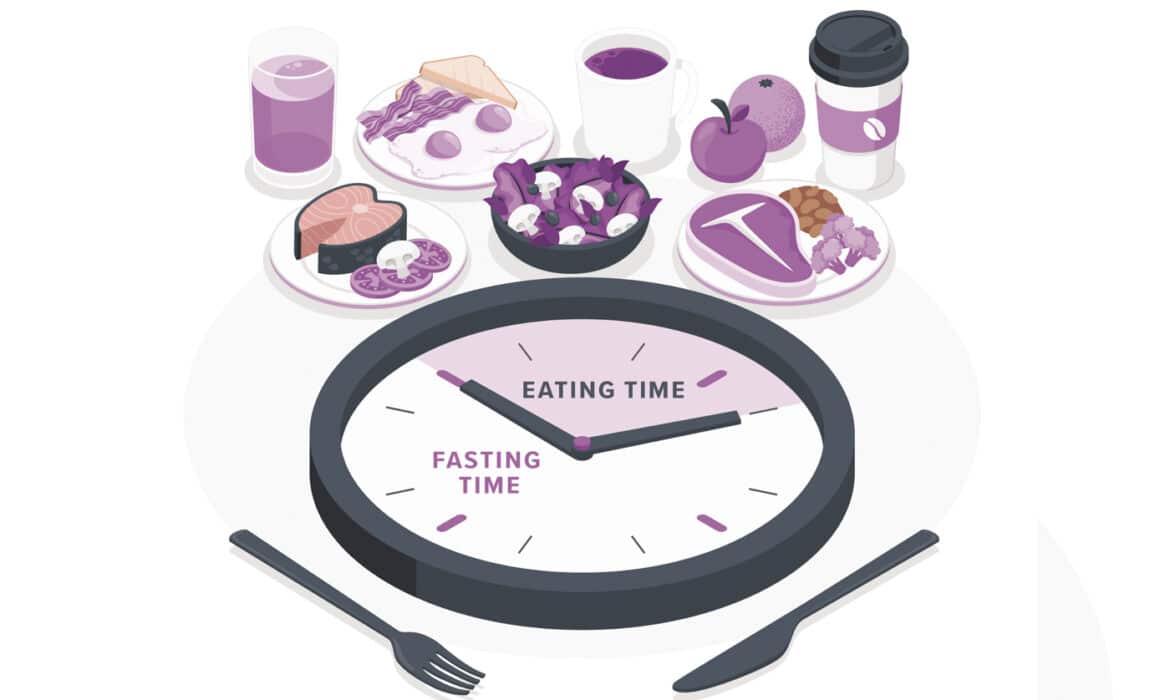How intermittent fasting and circadian rhythms impact health
Fact checked by Shannon Sparks
There’s a rhythm to life. The tides rise and fall, the Earth revolves around the sun, and you have a sleep-wake cycle. This cycle — known as circadian rhythm — has a big impact on metabolism. Research reveals that your sleep-wake cycle regulates how your body uses sugar and fats, and how it burns calories.
“Time is more than just a number on your watch,” says Kerry Hackworth, a Chicago-based registered dietitian and founder of Dietitian Kerry, PLLC. “Our body systems are very in-tune with the time of day. A specific area of your brain is tasked with being the timekeeper that communicates with the rest of your body, including your liver, pancreas, gastrointestinal tract, muscles, and fat tissues.”
This means that effective eating is not only about what you eat but when. Multiple factors play a role in heart and metabolic health, including:
• When during the day you eat
• How often you eat
• How regularly you eat
• How long you go without eating within a day
“Our bodies undergo several peaks and valleys throughout the day, and our body clock is constantly communicating with our bodily systems. For example, the ability to break down glucose peaks during the day and goes down at night — the time we usually are not eating. Melatonin, the well known sleepy hormone, goes down in the morning and peaks later at night,” Hackworth says.
Chronobiology, the study of our biological rhythms, links the circadian system with metabolism and behavior. “This important communication system is what sends you feelings of hunger, fullness, tiredness, and also takes feedback on light and food availability throughout the day,” Hackworth says.
Eating with the clock
Time-restricted eating, also known as intermittent fasting, involves eating only during set times each day, such as from 1 p.m. to 8 p.m. This form of eating makes the most of the body’s biological rhythms to break down and process food.
“Our bodies process and package nutrients somewhat differently at various time points during the day,” Doerfler says. Your body is more insulin-sensitive and can control blood sugar better as the day goes on, for example.
Yet, we often crave sugar later in the day because of our circadian rhythms. In the late afternoon, we experience a natural dip in the hormones that control wakefulness, so the brain wants glucose to stay awake.
Intermittent fasting ranks as one of the top five diets consumers reported trying, according to the 2023 Food and Health Survey by the International Food Information Council (IFIC). And a new body of research from the University of Illinois Chicago shows that for weight loss, intermittent fasting works just as well as calorie counting. However, people should still check with their doctor to make sure this form of eating is safe for them, especially if they have a chronic medical condition.
“Time-restricted feeding does not appear to offer unique weight-loss benefits over total calorie restriction, but it can be a useful tool to help us shave calories and avoid impulsive eating,” says Bethany Doerfler, senior clinical research dietitian at Northwestern Medicine in Chicago.
In general, research has shown that time-restricted eating methods are a safe, zero-cost way to lower fat mass, blood pressure, triglyceride levels, and markers of oxidative stress. However, “fasting does not promote mindful eating and listening to your body’s hunger cues,” Hackworth says.
Although you are limiting when to eat, intermittent fasting doesn’t take into account the quality of what you are eating. “With nearly 90% of Americans missing out on their daily servings of fruits and vegetables, it could be helpful to set a smaller, more realistic goal like adding more fruits and vegetables to your daily meal plan,” Hackworth says.
Still, intermittent fasting can make a difference. “There are metabolic and behavioral benefits to closing the kitchen by 7 or 7:30 p.m. and allowing for an overnight fast,” Doerfler says. By putting boundaries on eating times and creating a manageable window, you will eliminate mindless snacking, too. “This pattern of eating allows us to avoid our most problem eating time — evening — and allows us to eat when we are more likely to use nutrients versus storing them,” she adds.
Keep in mind, time-restricted eating and fasting protocols won’t necessarily come easily right away, nor will they solve every nutritional need. “With any new dietary change, it has to be sustainable over a long-term period. It usually needs to include your whole household to be attainable, and it should fit in with your social life, too,” Hackworth says.
The bottom line: Paying attention to your natural body clock is important. Support it by creating an eating schedule, eating less in the evening hours, and being aware of daily hormonal dips so that you can plan nourishing, balanced meals and snacks throughout the day.














